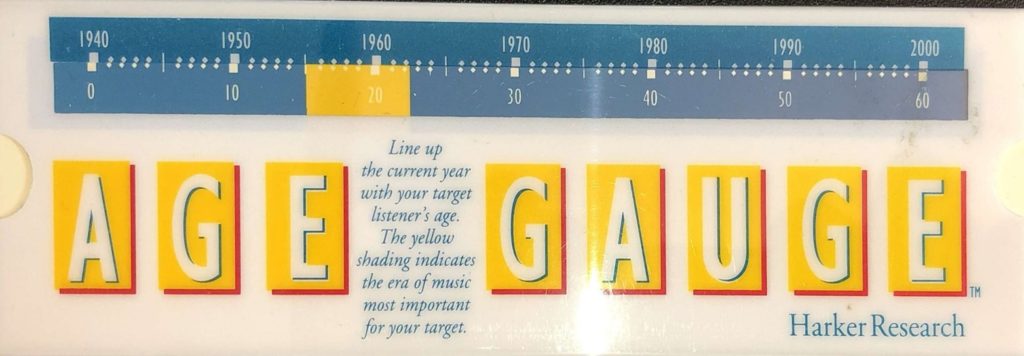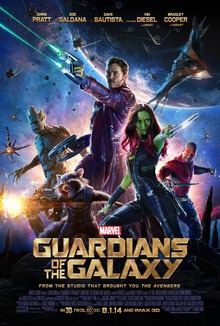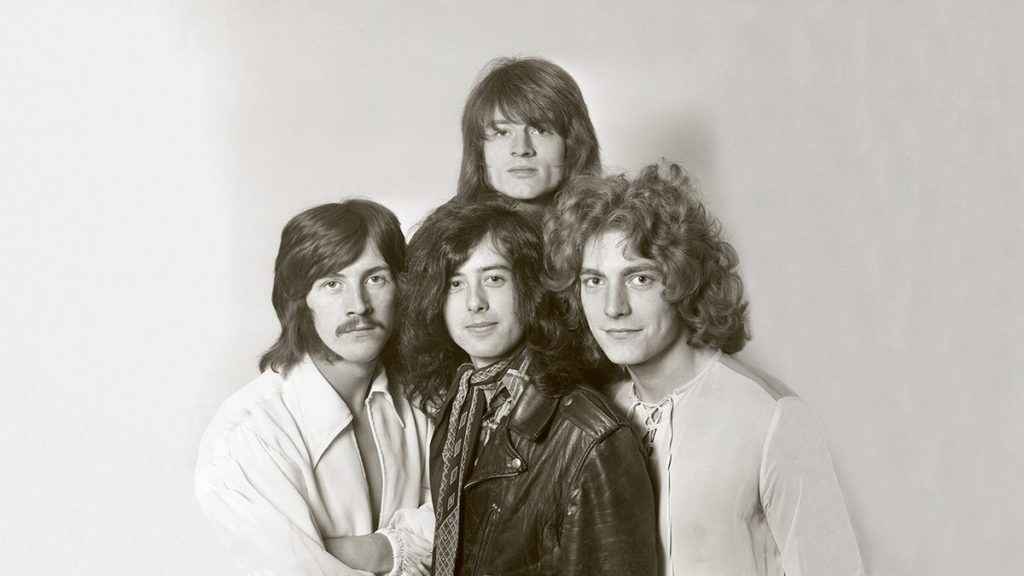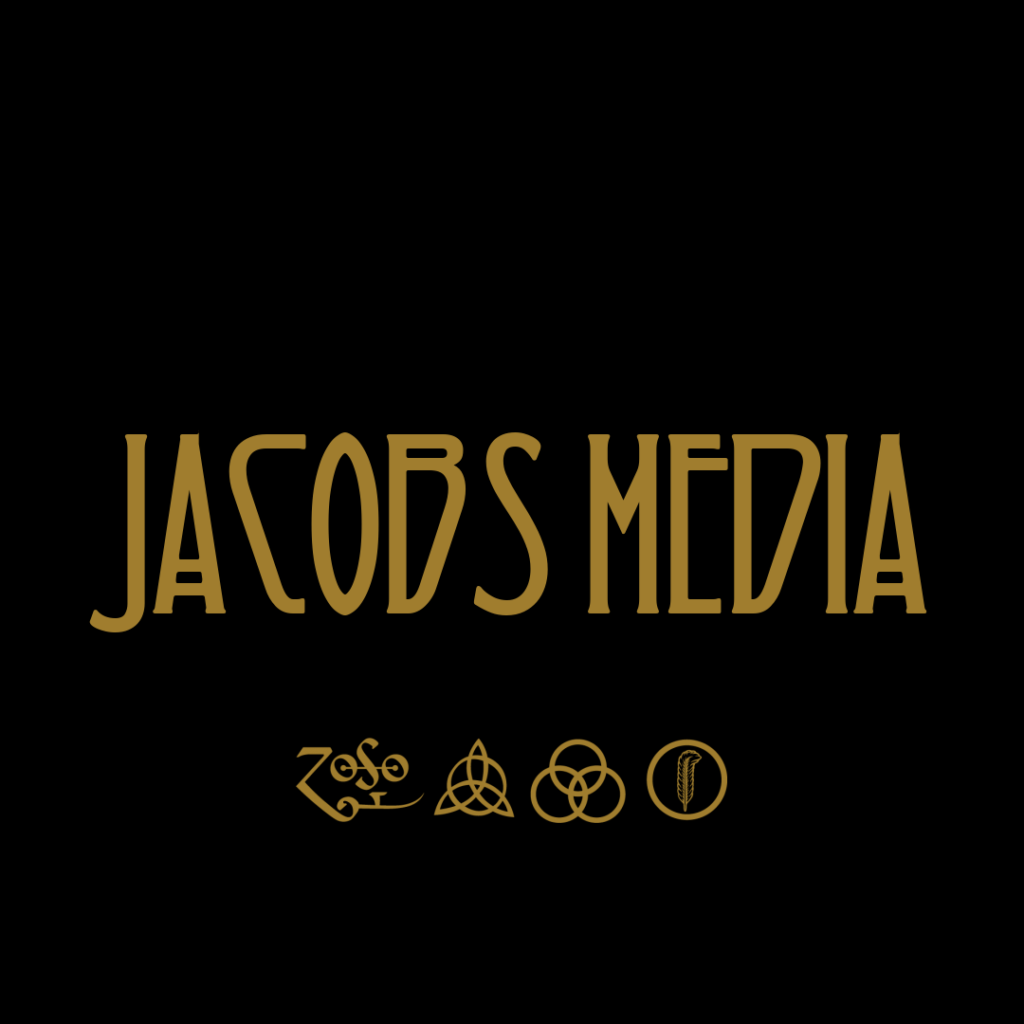
Time was, we radio programmers could pretty easily and effectively target music and formats to highly focused demographics. Format radio has been successful for decades, offering the ability to super-serve discreet audience demographics by age, gender, ethnicity, geography, and other variables.
The reason all of this format architecture worked so well had everything to do with sociology. Most astute PDs learned long ago that nostalgia plays an out-sized role in determining the music most people love. Whether you grew up with the Ventures, the Byrds, Bush, or Wu-Tang Clan, chances are the music that you embraced in your teen years is the stuff you’ll continue to enjoy listening to for decades, if not the rest of your life.
Think about your parents and grandparents. Nothing is more evocative than their enjoyment of the music they grew up with – whether it’s Glenn Miller, Elvis, or the Beach Boys.
And that logic path has held up for years, even decades, as generations and generations have gravitated to those seminal songs and bands they associate with their youth.
Until now, that is.
A simple and brilliant tool that many of us in radio kept in the top drawer was Harker’s Research “Age Gauge.” It became a rather foolproof way to calculate the musical sweet spot of any audience by simply adjusting the slider to your desired target listener.

It worked because there’s always that nostalgic “pull” for most people, no matter whether they grew up during the Vietnam War, the Cold War, or Game of Thrones. Now, however, many people are off the charts – or gauge.
In recent years, it has become clear to many programmers that consumers aren’t always behaving along these established lines. Many, in fact, enjoy music that was released long before they were born. We see that consistently in ratings reports, perceptual studies, and music tests where “generation bending” has become a common phenomenon. It’s not unusual for younger consumers to enjoy older music – like Classic Rock – even more than the genre’s audience that grew up with these songs, albums, and bands back in the ’70s and ’80s.
So, what explains this? As noted, the ability to create and share playlists – starting with the iPod and coursing through services like Spotify – have opened up musical tastes, while obliterating boundaries. When you ask someone these days what type of music they listen to, most will tell you “everything.” That’s not just something they say – tastes have become more eclectic, spilling into styles and genres that defy predictability.
The video era – starting with the launch of MTV in 1981 – was a contributor. For the first time, it was possible to see artists like David Bowie, Eurythmics, Prince, and Run-DMC every hour of every day – rather than in concert or during those rare television appearances.
And an outgrowth of that was the omnipresence of songs – from a multitude of eras – in the most popular TV shows and series, as well as movies. From Gray’s  Anatomy to Guardians of the Galaxy, many young consumers were first exposed to classic music and the bands that created it – not on the radio – but as soundtracks on these television and movie hits.
Anatomy to Guardians of the Galaxy, many young consumers were first exposed to classic music and the bands that created it – not on the radio – but as soundtracks on these television and movie hits.
That’s created exposure to individual songs – not bands – that were placed in these films and shows for aesthetic reasons. But that doesn’t alter the fact that millions of new consumers are hearing many of these songs for the very first time, Shazaming them, and enjoying hearing them when they’re played on the radio.
That’s spawned an entirely new revenue stream for record labels, as it has for radio stations focused on music from different eras – especially Classic Rock.
A new story in Rolling Stone by Amy X. Wang tells you all you need to know in its title: “The Eternal Revenue Stream of Led Zeppelin.”

But it’s the subtitle that reveals the new model for turbocharging old material, using modern-day marketing tricks to generate revenue, as well as new fans:
“In the streaming era, record companies are cashing in anew on old hits – and getting more creative about how they do it.”
Led Zeppelin turns 50 years-old this year, and Warner Music Group’s president of global catalog, Tim Fraser-Harding, is pulling out all the stops to ensure its success.
The article doesn’t specify the percentage of revenue now attributable to old material, but others I’ve talked to in the industry suggest it has now become a critical piece of the pie.
To that point, Zeppelin’s website has been revamped, and it’s blown up. New interactive  fan features include a logo generator (see right), as well as a playlist creator that lets consumers create and share playlists from the band the Who’s Keith Moon said would be a dud – it would go down like a “lead zeppelin.”
fan features include a logo generator (see right), as well as a playlist creator that lets consumers create and share playlists from the band the Who’s Keith Moon said would be a dud – it would go down like a “lead zeppelin.”
A half century later, Led Zeppelin and Warner’s catalog division is a cash cow.
Listening to Fraser-Harding’s catalog is comparable to how savvy Classic Rock programmers approach their craft, keeping a gold-based format fresh and fan-focused:
“It’s a really interesting time at the moment in catalog – sometimes, it’s a question of how we make something out of nothing.”
Older acts may, in fact, be more profitable because their products are more physical. For new bands, the revenue is often in the form of streaming – nowhere near the ROI.
Fraser-Harding says the trend is accelerating. He says the last year has been a turning point for catalog, spurring his group to get creative about how they market their gold – including this Zeppelin initiative.
In radio, we’re seeing it, too – in the ratings, in perceptual studies, and in music tests. Younger demographics often give higher scores to songs that were released decades before they were born. In some cases, they are more enthusiastic about the music than Boomers who enjoyed it in “real time” back in the ’60s, ’70s, and ’80s.
But it’s Wang’s observation that speaks volumes about the power of Classic Rock – on the label, and by extension, on the radio stations that play it:
“Listeners don’t care what year a song was released anymore; they only care if they like the sound.”
In radio, we see that phenomenon in the various forms of research that’s conducted.
 Fraser-Harding says the rapid rate of speed at which pop culture is moving forces his team to move quickly, or miss opportunities.
Fraser-Harding says the rapid rate of speed at which pop culture is moving forces his team to move quickly, or miss opportunities.
That “seize the moment” mindset is something that Classic Rock radio should be embracing as well.
Not to mention the absolute lack of hesitance to throw the company’s marketing weight and resources behind music archives produced by a band that was predicted to never make it – a half century ago.
For WMG, the old stuff has become pure gold – literally. Radio companies and their sales staffs should be treating it in exactly the same way.
Thanks to Richard Harker & Steve Goldstein
- What To Do If Your Radio Station Goes Through A Midlife Crisis - April 25, 2025
- A 2020 Lesson?It Could All Be Gone In A Flash - April 24, 2025
- How AI Can Give Radio Personalities More…PERSONALITY - April 23, 2025




Musical connection: Worth it’s weight in Gold.
At our classic hits station, I hear from listeners in their early 30s and late 20s. It’s outside our target demo, but they love the songs, and I’m happy to have them listen.
My son is in his early 20s, and his phone is packed with 80s hits — all from before he was born.
Good songs endure.
My wife is constantly annoyed with my 17-year-old daughter’s choice in music. She and her friends are listening to many songs from the 80’s. I graduated from high school in 1989, so I love it when she cranks out Queen and Journey, but my wife is eight years younger than me and would much prefer to hear stuff from the 90’s.
Hey Fred –
New reality is Gen Y and Z are the first generations where their music DNA will not be formed by radio but by multiple platforms controlled by the device in their hands.
Thanks for everything you do.
Mike Anthony
And yet, oldies stations will STILL deal with the “stigma” placed on it by advertisers and agencies…the audience is “too old”. Please, God…for all in Heaven, change their perceptions.
Working on it, Kevin, working on it. 🙂
We created an updated Age Gauge when this one became outdated. The Age Of Influence revolves around the emotional connection a listener/viewer has with music and shows released within the era of first dates, school dances, etc. Great article though!
Exactly! I always thought this was a brilliant tool that helped shape our thinking. Thanks to you guys.
I have my Age Gage in MY top drawer. I wish Harker would update it since I, and a throng of disenfranchised listeners, have fallen off the edge.
Word of caution: when younger listeners start loving “older music” it often leads to the station revamping their target. What follows is playing and marketing adjustments. “Dance with the one who brung yah.”
I believe they have updated it, Bobby. And sage advice, to be sure. Thanks for chiming in.